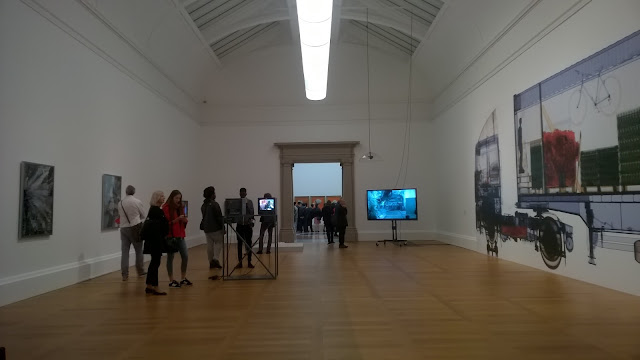Colocation, Time Displacement. The Weight of Data
During a visit to the Tate Britain Museum, an exhibition in particular caught my eye more than the others.
The Weight of Data, a contemporary project series at the Tate.
The works in this space refer to recent attempts to quantify the physical mass of the internet with comparing the total weight of information to objects with varying form.
The exhibition displays recent work by four emerging artists settled in Britain. Eloise Hawser, Katrina Pallmer, Yuri Pattison, Lizzie Carey-Thomas and Charlotte Prodger.
In their work, these artists operate between virtual and physical dimensions. They explore our relationship with objects through different forms of mediation, such as scanning machines, website content, and time and space layering. They use temporal lapse to navigate in the past, present and imagined future.
All the pieces in this gallery, from photographs and videos to sculptures, investigate the capacity of the internet space to store data.
A work which I to investigate further about, was Colocation, Time Displacement by Yuri Pattison.
Pattison is a young Irish artist based in London and creates work with subjective datasets. His practice reflects on the impact of digital media on our understanding of reality. Mastering a huge variety of media, his work often uses different devices to explore the strengths and limits of digital communication.
The video was screened on a tv in a corner of the space. A speaker for the audio was suspended from the ceiling. I would have given more importance to the work, using a bigger screen and several sources of audio for a more addictive experience. A dedicated, dark and soundproof room would have been ideal in my opinion.
Colocation, Time Displacement is an 18 minute long video in which a roving camera navigates the interior of Pionen, a former civil defence center in Stockholm, Sweden. Built in the 1970s to protect essential government functions from nuclear strike, it is now a datacentre. The Pirate Bay & Wikileaks have both used Pionen for their colocation services, as cited in the artist’s website.
Revelations of different kinds reach the viewers via a speed reading technology, which displays a conversation of a purported time traveller from the year 2036. The legend says that he was sent back to the year 1975 to recuperate an old computer machine (IBM 5100), needed to “debug” computer programs in the future year from which he came, but stopping in the year 2000 for “personal reasons”.
The effort to blend reality, eras, and provenance is hit in the different elements of the video. The viewer is left with an image that is inextricably complicated by time.
The aspect of this video which I was drawn to was the conversation set. Although it was difficult to keep up with the fast flowing words, the content had a funny tone. It was humorous and I found interesting to read about the time traveller’s stories.
The contrast between the visuals, the dialogue and the sound created the perfect balance for myself as a creative practitioner and observer. Visitors of the Tate Britain also seemed to be attracted to this video, because of its content and its way of communicating.
My overall opinion about Colocation, Time Displacement, is that it is successful because it is informative, interesting and fun. This blend of contradictions given by the mix of different medias, could be an inspiration for other creatives.
Bibliography:
Carey-Thomas, Lizzie (May 2015) curator of the exhibition “The weight of Data” at Tate Britain.
Pattison, Yuri (2015) Colocation, Time Displacement, Dystopia, DIS Magazine website.
Pattison, Yuri (born 1986, Dublin) Colocation, Time Displacement, Artist’s website
 |
Space of the exhibition "The Weight of Data".
Author's own. |


















